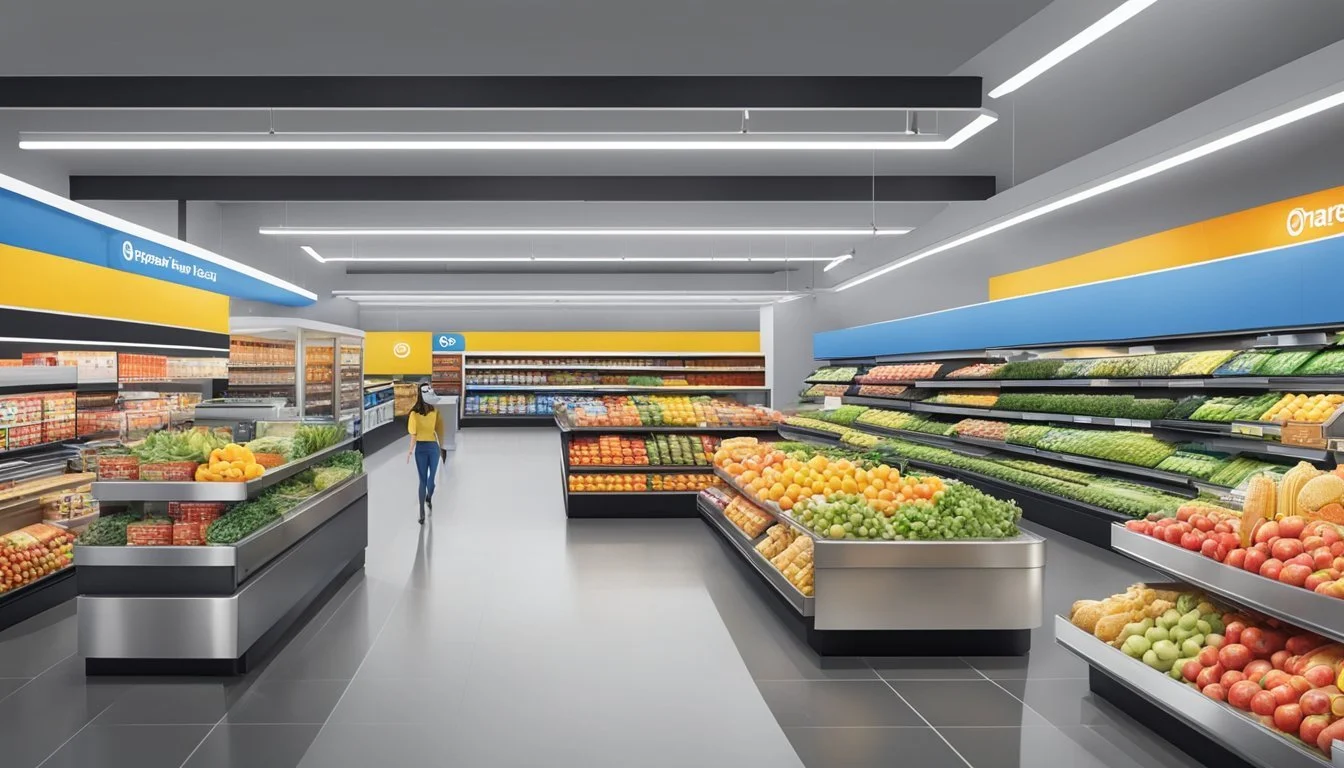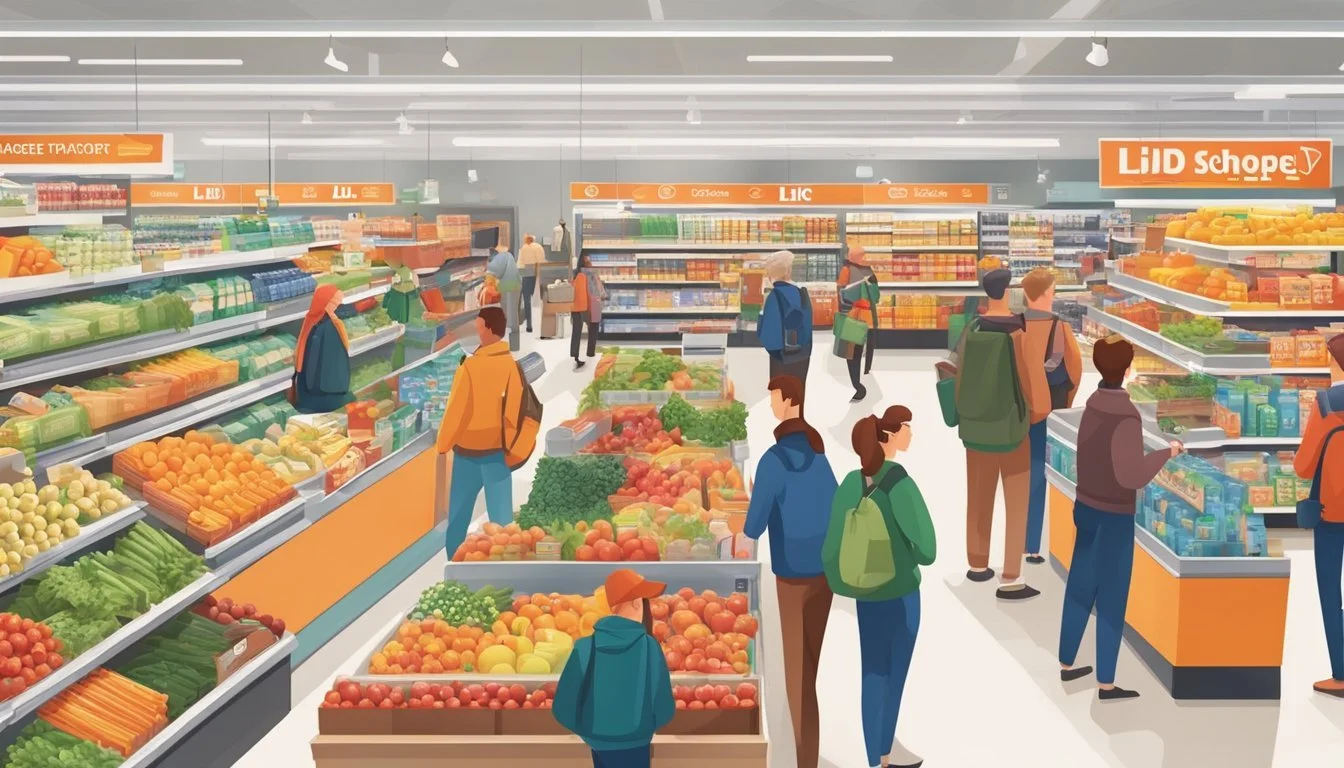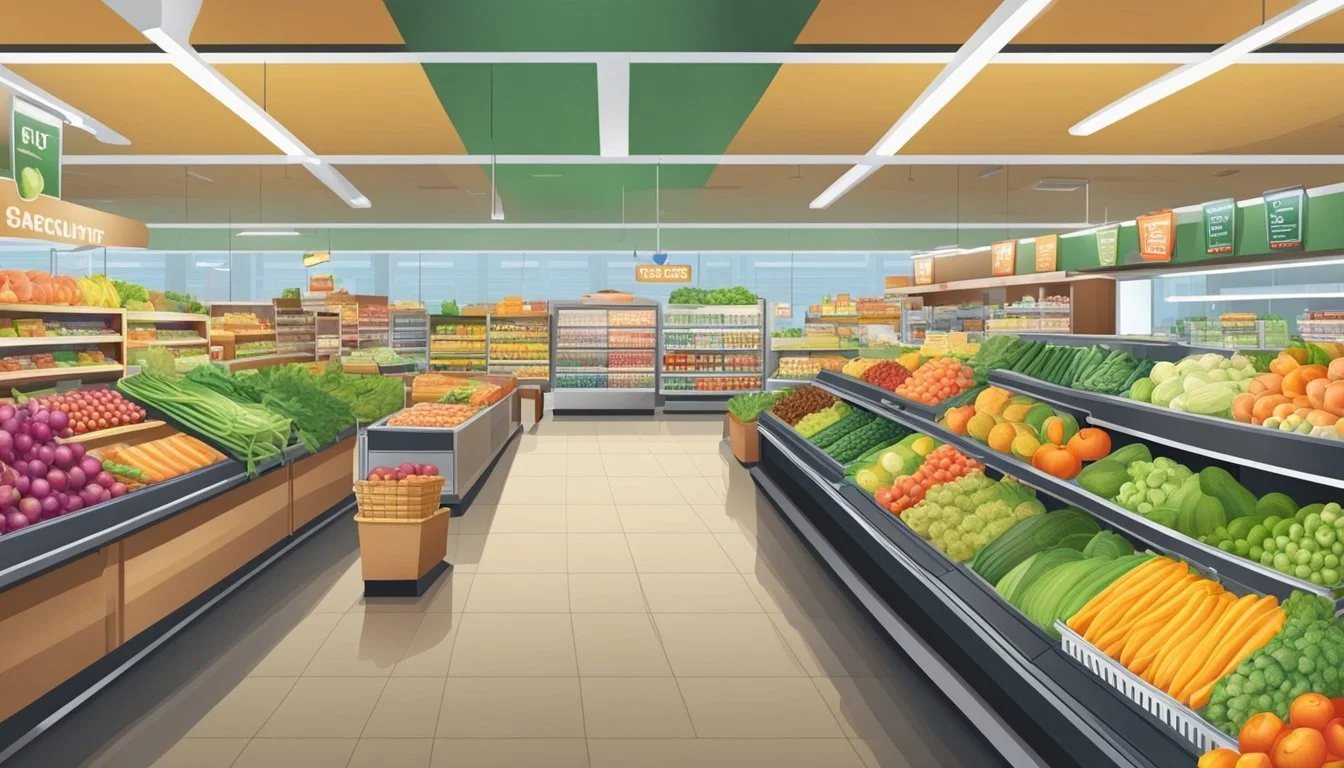Target vs Lidl
A Comprehensive Comparison of Price, Quality, and Selection
Target and Lidl are two popular grocery store chains that offer distinct shopping experiences. Target, known for its wide range of products beyond groceries, has established itself as a one-stop shop for many Americans. Lidl, a German discount grocer, has been expanding its presence in the United States, attracting customers with its low prices and efficient store layouts.
While both stores have their strengths, Lidl generally offers lower prices on groceries compared to Target. Lidl's focus on providing budget-friendly options and efficient operations allows them to maintain competitive pricing. However, Target often provides a broader selection of products and brands, catering to customers who prefer more variety in their shopping experience.
The choice between Target and Lidl ultimately depends on individual preferences and shopping needs. Those prioritizing cost savings may lean towards Lidl, while shoppers seeking a more diverse product range might prefer Target. Factors such as store location, product quality, and customer service also play important roles in determining which store is better for each shopper.
Company Profiles
Target and Lidl are major players in the retail grocery landscape, each with its own unique history and growth trajectory. Both companies have expanded their footprints significantly in recent years, aiming to capture larger market shares.
History and Expansion of Target
Target Corporation began as Goodfellow Dry Goods in 1902 in Minneapolis, Minnesota. The company rebranded as Target in 1962, focusing on discount retail. Target has since grown into one of the largest retailers in the United States.
By 2024, Target operated over 1,900 stores across all 50 states. The company's expansion strategy has included:
Introducing smaller-format urban stores
Enhancing its e-commerce capabilities
Acquiring delivery platform Shipt in 2017
Target has also developed its grocery offerings, dedicating more floor space to food items and launching several private-label brands.
Lidl's Growth and U.S. Store Footprint
Lidl, a German discount supermarket chain, was founded in 1973. The company expanded rapidly across Europe before setting its sights on the U.S. market. Lidl opened its first U.S. store in 2017.
As of 2024, Lidl operated over 170 stores in the United States, primarily along the East Coast. The company's U.S. expansion has been characterized by:
A focus on smaller-format stores
Emphasis on private-label products
Competitive pricing strategies
Lidl's U.S. growth has been slower than initially projected, but the company continues to open new locations and refine its approach to the American market.
Product Range and Quality
Target and Lidl offer distinct product assortments, with varying approaches to store brands and quality. Both retailers aim to provide value, but their strategies differ in key ways.
Target's Product Assortment
Target boasts a diverse range of products, from groceries to home goods and clothing. In the grocery department, Target stocks national brands alongside its private-label offerings.
Target's Good & Gather line features over 2,000 food and beverage items. This brand focuses on quality ingredients without artificial flavors, synthetic colors, or high fructose corn syrup.
The retailer also carries fresh produce, though selection may vary by store size. Larger SuperTarget locations tend to have more extensive grocery departments.
Lidl's Product Selection and Quality
Lidl emphasizes a curated selection, with about 80% of products being private-label. This approach allows Lidl to offer lower prices while maintaining quality control.
Lidl's fresh produce section is a highlight, often featuring locally-sourced items. The retailer prides itself on its bakery, offering fresh-baked goods throughout the day.
Lidl's meat department includes options like grass-fed beef and organic chicken. The company has strict quality standards for its private-label products.
Store Brands Comparison
Target's private brands span various price points and quality tiers. Market Pantry offers budget-friendly basics, while Good & Gather provides premium options.
Lidl's store brands cover most product categories, from everyday essentials to gourmet items. The retailer's Preferred Selection line competes with national premium brands.
Both retailers invest in product testing and quality assurance for their private labels. Target's brands often emulate popular national products, while Lidl's offerings are designed to stand on their own merits.
Pricing Strategies
Target and Lidl employ distinct pricing approaches to attract and retain customers. These strategies significantly impact shoppers' budgets and overall shopping experiences.
Understanding Target's Pricing
Target utilizes a hybrid pricing model, blending everyday low prices with strategic sales and promotions. The retailer focuses on competitive pricing for essential items while offering higher margins on trendy or exclusive products. Target's REDcard provides an additional 5% discount on purchases, incentivizing customer loyalty.
Target also leverages price matching, allowing shoppers to request adjustments if they find lower prices elsewhere. This policy helps maintain customer trust and competitiveness. The company's pricing strategy often includes:
Weekly deals and circular ads
Clearance sections with marked-down items
Seasonal sales events
Target Circle loyalty program offers
Lidl's Competitive Pricing Model
As a discount grocer, Lidl prioritizes consistently low prices across its product range. The company achieves this through:
Limited product selection
Focus on private-label brands
Efficient store layouts
Streamlined operations
Lidl's pricing strategy aims to undercut traditional supermarkets by 15-50% on comparable items. The retailer regularly features rotating "surprise buys" on non-food items at deeply discounted prices.
Lidl conducts frequent price comparisons with competitors to ensure its offerings remain attractive. In a 2024 analysis, Lidl's prices were found to be 7% lower than Aldi's on a basket of 25 common household groceries. This aggressive pricing helps Lidl maintain its position as a budget-friendly option for cost-conscious shoppers.
Shopping Experience
Target and Lidl offer distinct shopping experiences, each with its own strengths. The store layouts, checkout processes, and overall efficiency impact how customers navigate and complete their grocery trips.
Navigating Target's Store Layout
Target's spacious stores feature wide aisles and clear signage. Groceries occupy a dedicated section, often near the entrance. The retailer's signature red carts come in various sizes, accommodating different shopping needs. Target's layout encourages browsing, with strategically placed endcaps showcasing deals and seasonal items.
Produce, dairy, and frozen foods are typically arranged along the store's perimeter. Target's store brand, Good & Gather, is prominently displayed throughout the grocery area. The retailer's size allows for a diverse product range, including non-grocery items like clothing and electronics.
Lidl's Shopping Efficiency and Checkouts
Lidl prioritizes efficiency with a compact store format. The retailer's layout follows a logical flow, guiding shoppers through different departments. Lidl's produce section is often near the entrance, featuring fresh fruits and vegetables at competitive prices.
The store's central aisles house an array of products, including Lidl's store brand items. Lidl's bakery, typically located near the checkout area, offers freshly baked goods throughout the day. The retailer's checkout process is streamlined, with multiple lanes to minimize wait times.
Lidl's smaller store size contributes to quicker shopping trips. The retailer's efficiency-focused approach extends to its shopping carts, which are designed for easy maneuverability through the aisles.
Promotions and Special Offers
Target and Lidl employ distinct strategies to attract customers through promotions and special offers. Both retailers aim to provide value and savings, but their approaches differ in execution and scope.
Target's Deals and Loyalty Programs
Target offers a mix of weekly deals and long-term savings programs. The retailer's circular features new discounts each week, often including both national brands and Target's private labels. Target Circle, the store's free loyalty program, provides personalized deals and 1% cashback on purchases.
Target RedCard holders receive an additional 5% discount on most items. The store runs seasonal sales events like "Target Deal Days" to compete with Amazon Prime Day. Clearance items are marked with colored stickers indicating discount levels.
Target frequently offers gift card promotions with purchases of specific items or categories. The retailer also price matches competitors' advertised prices within 14 days of purchase.
Lidl's Rotating Selection and Offers
Lidl focuses on a constantly changing array of limited-time deals. The store's "Fresh 5" promotion highlights weekly produce specials. Lidl's "Middle of Lidl" section features rotating non-grocery items at discounted prices.
New offers launch every Thursday, creating a sense of urgency for shoppers. Lidl's app provides digital coupons and previews of upcoming deals. The store emphasizes its own private label products in promotions.
Lidl occasionally runs themed weeks featuring products from specific countries or regions. Seasonal items appear for limited periods at competitive prices. The retailer's "Lidl Plus" rewards program offers digital coupons and personalized discounts based on shopping history.
Customer Satisfaction and Brand Perception
Target and Lidl have distinct approaches to customer satisfaction and brand perception. Each retailer has carved out a unique position in the market, appealing to different shopper segments.
Target's Customer Base and Brand Loyalty
Target has cultivated a loyal following among middle-class shoppers and families. The retailer's "Expect More. Pay Less." slogan resonates with customers seeking quality products at affordable prices. Target's focus on stylish, on-trend merchandise has helped build a strong brand image.
Target offers a mix of private labels and national brands, catering to both brand-loyal and brand-agnostic customers. The company's exclusive partnerships with designers and celebrities further enhance its appeal.
Customer satisfaction ratings for Target consistently rank above average in the retail sector. Shoppers appreciate the clean store layouts, friendly staff, and convenient services like same-day delivery and in-store pickup.
Lidl's Market Impact and Shopper Ratings
Lidl, a relative newcomer to the U.S. market, has made significant strides in customer satisfaction. The discount grocer's no-frills approach and low prices have attracted price-conscious shoppers.
Lidl's limited assortment of high-quality private label products has garnered positive reviews. Customer surveys indicate high satisfaction with Lidl's organic offerings and wine selection.
The retailer's compact store format and efficient operations contribute to a streamlined shopping experience. This appeals to customers who value speed and simplicity in their grocery trips.
Lidl has shown adaptability in its U.S. expansion, adjusting its product mix and store layouts based on customer feedback. This responsiveness has led to higher satisfaction scores in newer markets compared to areas where Lidl first entered.
Sustainability and Corporate Responsibility
Target and Lidl have both made significant strides in sustainability and corporate responsibility. These grocery stores have implemented various initiatives to reduce their environmental impact and promote social welfare.
Target's Commitment to the Environment
Target has set ambitious goals to combat climate change and promote sustainability. The company aims to achieve net zero greenhouse gas emissions by 2040. They have also committed to designing 100% of their owned brand products for circularity by 2040.
Target has implemented energy-efficient technologies in its stores, including LED lighting and improved HVAC systems. The company has also invested in renewable energy, with plans to source 100% renewable electricity for its operations by 2030.
In addition to these efforts, Target has launched sustainability-focused product lines. These include household items made from recycled materials and eco-friendly cleaning products. The company also encourages customers to recycle by providing in-store collection points for items like electronics and plastic bags.
Lidl's Sustainability Practices
Lidl has made substantial progress in its sustainability initiatives. The company released its first Corporate Social Responsibility report in 2024, outlining 12 key goals across five focus areas.
One of Lidl's primary objectives is to reduce Scope 1 and Scope 2 greenhouse gas emissions by 70% compared to 2019 levels by 2030. This ambitious target demonstrates the grocery store's commitment to addressing climate change.
Lidl has also focused on sustainable sourcing practices. The company aims to ensure that all its coffee, tea, and cocoa products are sustainably certified. Additionally, Lidl has implemented measures to reduce food waste in its stores and distribution centers.
The grocery chain has made efforts to improve its packaging sustainability. Lidl plans to make 100% of its private label packaging recyclable, reusable, or compostable by 2025.
Conclusion
Target and Lidl offer distinct shopping experiences for grocery buyers. Target provides a wide range of products beyond groceries, including clothing, electronics, and home goods. This variety appeals to customers seeking one-stop shopping convenience.
Lidl focuses primarily on groceries and offers a more limited selection. The German-based retailer emphasizes low prices and private-label products. This approach attracts budget-conscious shoppers looking to save money on everyday essentials.
Store layouts differ significantly between the two chains. Target stores tend to be larger and more spacious, with clearly defined departments. Lidl stores are typically smaller and more compact, with a no-frills layout designed for efficiency.
Product quality varies between the retailers. Target carries many well-known national brands alongside its own store brands. Lidl relies heavily on its private-label offerings, which can vary in quality but often provide good value for money.
Price comparisons reveal strengths for both stores. Target frequently runs sales and promotions on popular items. Lidl maintains consistently low prices across its product range, particularly on staple goods and produce.
The choice between Target and Lidl ultimately depends on individual shopping preferences and priorities. Shoppers valuing selection and brand names may prefer Target. Those focused primarily on saving money on groceries might find Lidl more appealing.










